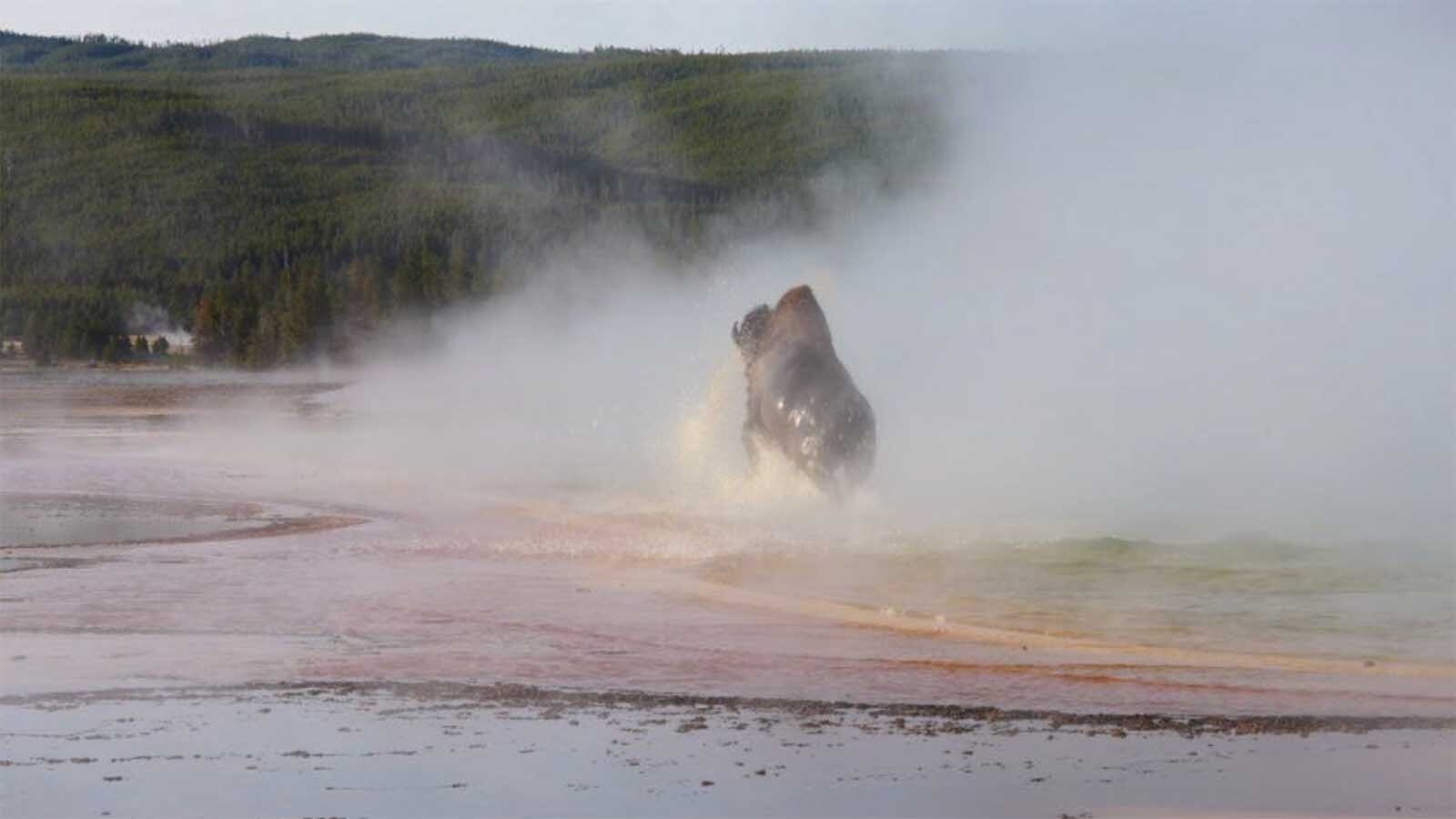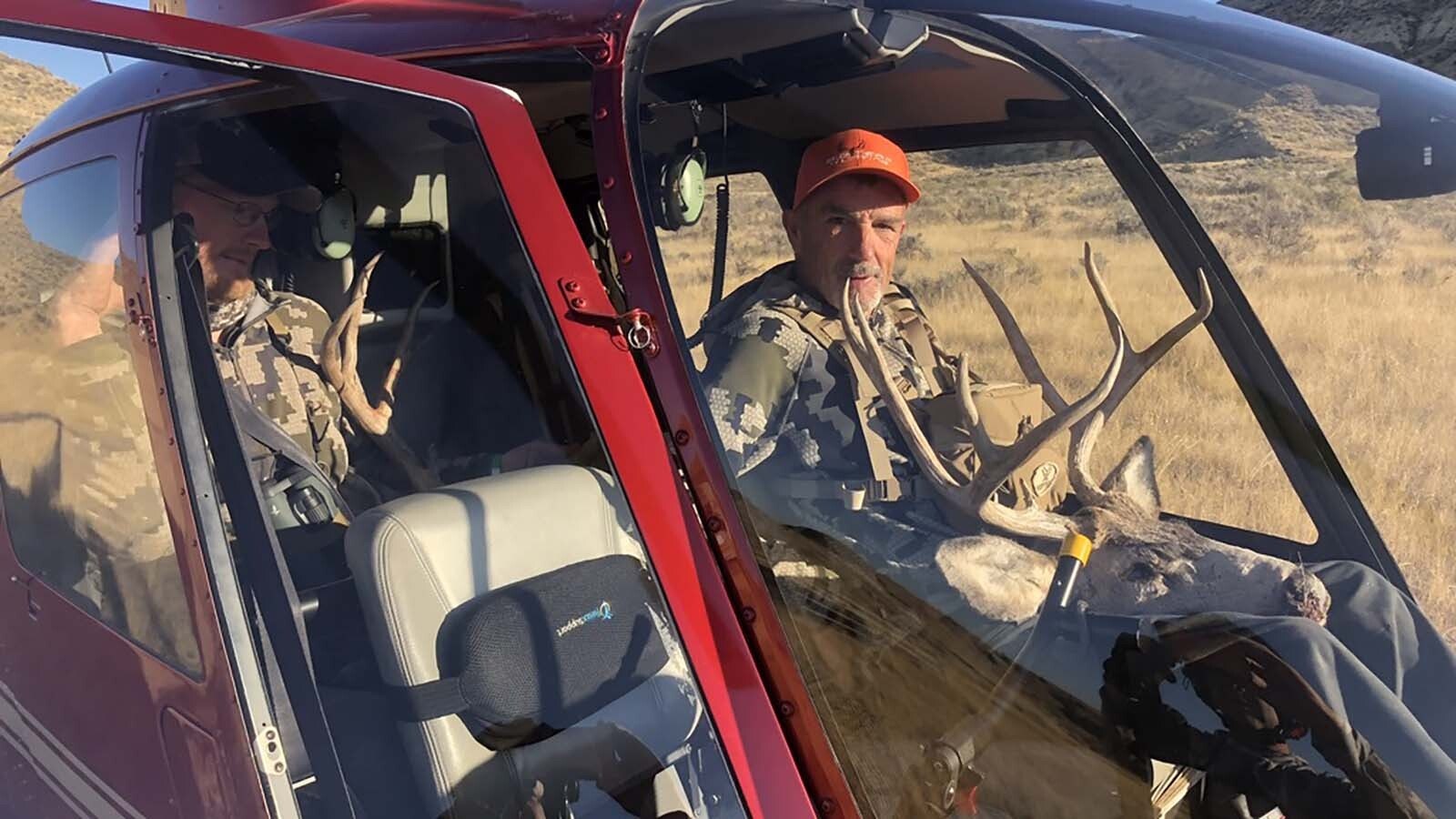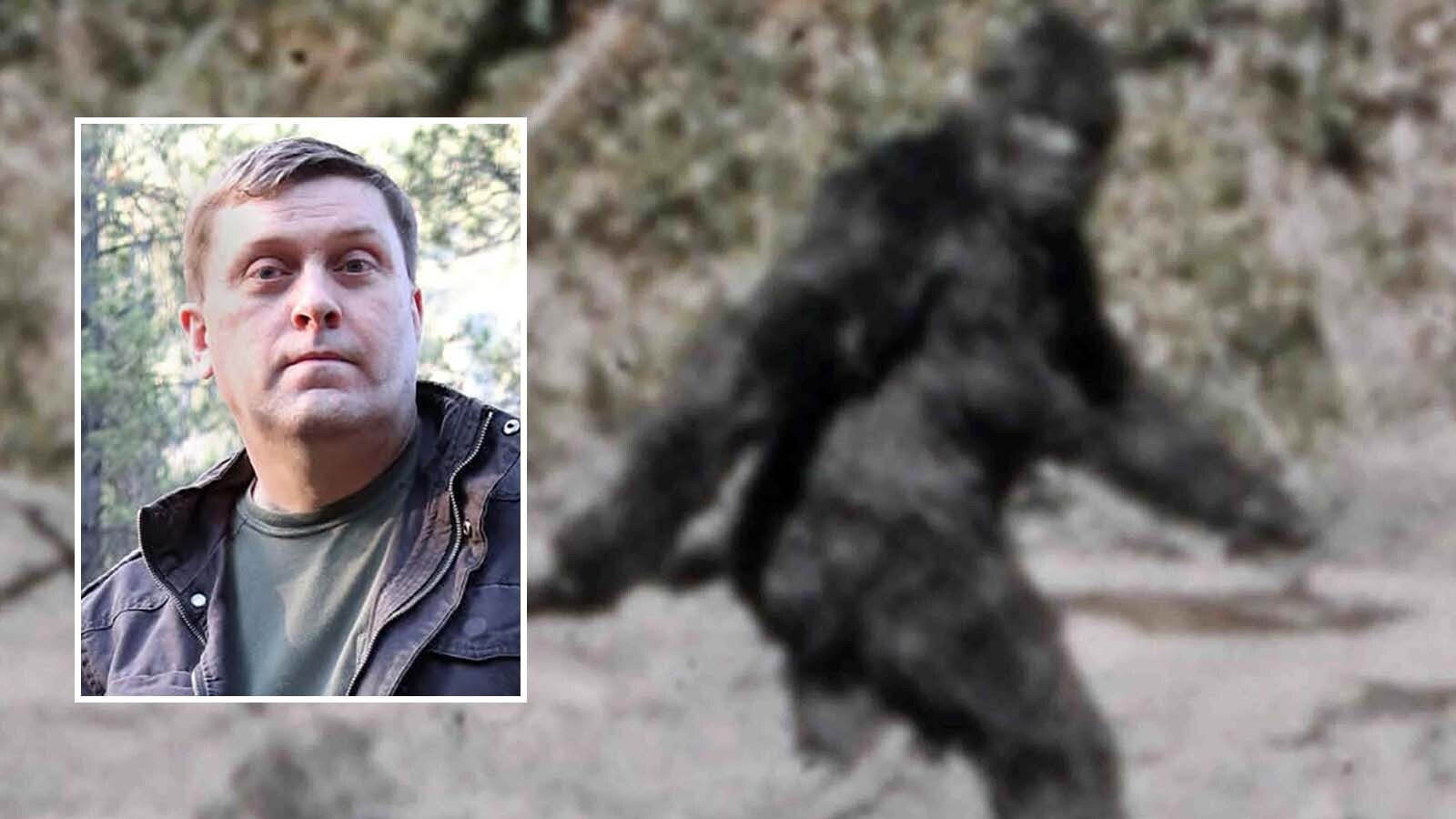Dozens of Yellowstone National Park visitors were shocked to witness the death of a bison that slipped into the scalding waters of the Grand Prismatic Spring over the weekend.
Around 7:30 a.m. Saturday, a bull bison was walking near Grand Prismatic Spring when it stumbled into the water at the edge of the 160-degree pool. The bison attempted to escape but ultimately died in its struggle, leaving its carcass floating at the shallow edge of the pool.
“It took a few steps into a shallow area to the right of the pool, turned around, and stepped out very quickly,” Louise Howard, who witnessed the event, wrote on social media. “It stood for a moment, then turned back towards the spring and stepped into a deeper section, then couldn’t get out despite trying its best.”
After its death, the bison’s carcass could be seen floating in the shallows of the thermal pool. Soon, it will be nothing but bones bleaching in the sun and mineral-rich water.
Not Alien Blood
In the rare instances where an animal or person perishes in one of Yellowstone’s thermal pools, many assume their remains are “dissolved" by acidic water. Mike Poland, scientist-in-charge of the Yellowstone Volcano Observatory, said that’s one of the public’s biggest misconceptions about Yellowstone.
“The misconception that a lot of people have is that all of the hot springs in Yellowstone are acidic,” he told Cowboy State Daily. “If you touch the water or fall in, you will dissolve because the acid will eat you away. But that's not the case.”
Most of Yellowstone’s thermal pools, including Grand Prismatic, are neutral on the pH scale. The water isn’t acidic at all, so it doesn’t have the ability to dissolve anything.
The danger of Yellowstone’s thermal waters comes from the heat. Animals and people are injured or killed by the burns caused by the boiling water, not its acidity.
“People think of the pools like alien blood or something like that,” Poland said. “That’s not the way the pools work. The big hot springs are almost all neutral, but they’re boiling. That’s what causes harm to people and animals.”
The acidic pools in Yellowstone, like Mud Volcano and Artists Paint Pots, aren’t so acidic that they’ll dissolve a body. Poland said the most acidic pool in the park has a pH similar to orange juice.
“There are a few places that are acidic, but not absurdly so,” he said. “You’re not going to dissolve organic matter in pools like Grand Prismatic. People think all the pools are potently acidic, but that just isn’t the case.”
Poached Bison
Yellowstone’s thermal pools might not be capable of dissolving organic matter, but bodies tend to disappear quickly once they fall in. When Il Hun Ro, 70, fell into the Abyss Pool in the West Thumb Geyser Basin around July 7, the only evidence at the scene was several “dark clumps” and Ro’s shoe-clad foot, which was recovered from the water.
People who have fallen or jumped into Yellowstone's pools and survived come out with second to third-degree burns covering most of their bodies. In September 2024, a 60-year-old woman from New Hampshire had to be air lifted to Eastern Idaho Regional Medical Center after walking off-trail at the Mallard Lake Trailhead and falling into a thermal pool, suffering burns to both legs.
Poland said the pools’ boiling water can also easily explain why bodies disappear in Yellowstone’s thermal pools. It’s a natural phenomenon that’s used and can be replicated in kitchens around the world.
“It’s like poaching a chicken,” he said. “It’s a morbid analogy, but when you throw meat into boiling water, it loosens the meat from the bones and cooks it. The water is hot enough to kill a bison, and that boiling water will eat away at the organic material.”
Yellowstone visitors don’t need to see an animal fall into and die in a thermal pool to see evidence of how this works. Poland wasn’t sure how long the bison’s carcass would remain intact, but its bones will linger at the edge of Grand Prismatic Spring, unless park rangers move it.
“Bones don’t boil away,” Poland said. “The organic material won’t last long in that hot water, but the bones will be around for a long time. Grand Prismatic is around 89 degrees at the surface and is even hotter a few inches below. That’s still pretty hot.”
That means, for a moment, a succulent bison stew was simmering at the edge of Grand Prismatic after the bison died. Opportunists like ravens and coyotes may be tempted to sample this Yellowstone delicacy, but it’d be worth more than their lives to try.

A Cautionary Tale
Yellowstone’s wildlife operates with an innate sense of safety and awareness of their surroundings that can be consciously lacking in many human visitors. The incident at Grand Prismatic Spring was a rare misstep.
“This sort of thing isn’t common, but it does happen from time to time,” Poland said. “I've never seen an animal go into one of the hot springs, but I've heard plenty of stories of people seeing elk or bison caught in hot areas that haven't been able to get out.”
There haven’t been any photos of the bison carcass floating in Grand Prismatic since the morning of the incident. It’s possible Yellowstone rangers decided to remove the body for the safety of visitors, something they often do, given that the decaying flesh would lure everything from magpies to sow grizzlies with cubs.
Nevertheless, the Saturday morning incident at Grand Prismatic should serve as a cautionary tale. There are many ways to die in Yellowstone National Park, and falling into a thermal pool is a horrifically painful way to shuffle off this mortal coil, even if there isn't evidence to attest to this grim fate.
“Overall, I think the animals can feel how hot something is beneath their feet,” Poland said, “but even the edges of pools like Grand Prismatic are hot enough to kill you. You’re not going to be eaten away by acid, but they’re hot enough to cause tremendous harm.”
Andrew Rossi can be reached at arossi@cowboystatedaily.com.





